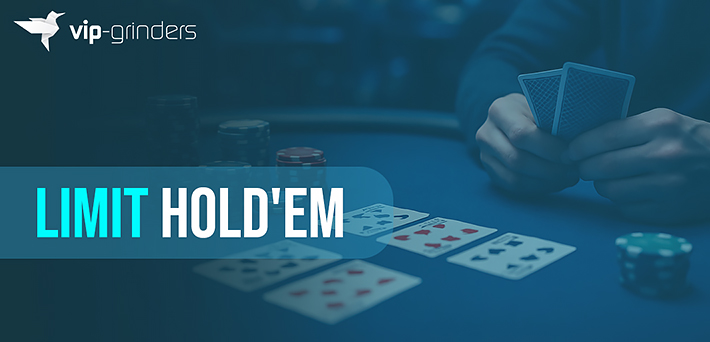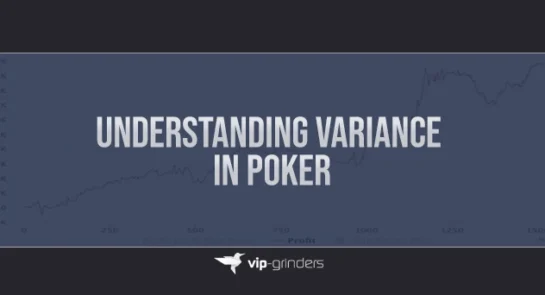Limit Hold’em: Strategy and Tips
We’ll focus exclusively on what changes (and what stays) when you play Limit: strategy, bet structure, hand selection, and sample hands.

Rules & Structure of Limit Hold’em
Before diving deep into strategy, it’s crucial to understand what makes Limit Hold’em unique from NLH and how its structure shapes every decision you make at the table. Nail the FLH fundamentals, then move onto more advanced play.
First, bets and raises come in fixed increments. In the preflop and flop rounds, the betting unit is equal to the big blind. On the turn and river, bets switch to double the big blind.
There is usually a cap on the number of raises per street—usually a max of one bet plus three raises. Once that limit is reached, players can only call or fold.
Because of these constraints, implied odds and drawing hands play differently than in No-Limit. You get to see more flops—and more turns—with speculative hands, but your ability to protect or punish with size is limited. Big hands get rewarded with multiple value betting streets, but you must carefully balance pot control versus exploitation. Much of what you may have learned in our Advanced Hold’em Strategy guide, will not apply to Limit Hold’em. But Limit Hold’em does not require less skill, it requires a difference skillset.
Preflop Limit Hold’em Strategy
Preflop in Limit is about selectivity and setting up for postflop value. Because you can’t bet huge, you have to pick your spots carefully.
You should play tighter than in No-Limit, especially in early positions. As many strategy guides recommend: start with premium hands and see only ~20-25% of flops. In late positions, you can loosen up slightly with suited connectors or hands that play well multiway.
Raises, Limping & Cold-Calling
Limping has a place in Limit Hold’em: sometimes you limp speculative hands in loose games to see more flops cheaply. But more often, if you open-limp and get raised, you should fold unless your hand plays well post-flop. Cold-calling in the big blind or blind defense is common because odd structures and pot odds often justify continued play. Premium hands should be raised, not just called.
Postflop Strategy: Flop, Turn & River in Limit Hold’em
Limit Hold’em postflop is a world apart from No-Limit. You’ll get many small bets flooding the pot, and bluffing is far less flexible—every bet must work hard for its chips.
Limit Hold’em Flop Play
From experience, continuation bets need to be considered and selective. Don’t just fire them out because it’s “standard.” Use c-bets when you hold strong made hands or solid draws that generate genuine equity. It’s about squeezing value, not trying to bluff players off. Small edges add up here—extracting an extra bet or two from marginal hands over many sessions is what turns the tide.
Turn & River
The turn, transitioning to the “big bet,” demands an updated read on your equity and opponents’ ranges. With fixed bet sizes, you reassess pot odds constantly, shaping your line accordingly.
Check-raises in Limit Hold’em on the turn are the most common way to get value out of premium hands. Because in Limit Hold’em it isn’t about pushing people off hands with sheer bet size, It’s precision pot control, calculated aggression, and squeezing value yet staying flexible. From my Limit grind sessions on ACR Poker – where you can find Limit games at the right times – mastering this balance between patience and pressure is what separates solid winners from the rest.
Hand Reading & Board Texture Awareness in Limit
Because bet sizes are fixed and you’ll see many flops, reading opponent ranges and adapting to board texture is a major edge. This section should live just after your postflop strategy.
Recognizing nut potential and range splits
- On dry boards (rainbow, low connectivity), your strong hands likely remain ahead — bet aggressively.
- On wet/connected boards, more combinations of strong draws exist — you must use caution or block bets.
- Watch how many players see the flop—multiway pots change equity dramatically.
Adjustments from No-Limit to Limit Hold’em
When coming from NLHE, you must adjust your entire mindset — many plays that work in No-Limit are weaker or wrong in Limit.
5 crucial adjustments NLHE players must make when switching to Limit Hold’em:
- Be much more selective preflop (weaker draws are often unplayable).
- Press advantages early — you can’t rely on future massive bets.
- Be more selective on the flop — you can’t always bet when marginal.
- Call more on the river because fixed bet sizes give you better odds.
- Use check-raises more frequently to generate extra value.
Implied Odds & Draw Value
In NLHE, you rely heavily on implied odds (big bets later). In Limit, implied odds are muted — you can’t extract massive payoffs. So many long-shot draws are less attractive.
Pots & Multiway Play
Because you see more flops and multiple players stay in, pot equity matters more. Hands that fare well multiway (e.g., suited connectors, two pair) gain relative value.
Bankroll & Game Selection in Limit
Limit has lower variance than No-Limit, but your win rate is also narrower. You must play volume, avoid tilt, and choose good tables.
- In live limit, rake and small edges eat you — look for soft games.
- Be patient — edge is incremental.
- Don’t move up stakes until your win rate is proven over a large sample.
6 Common Mistakes in Limit Hold’em
Over the years I’ve seen many limit players fall into these traps:
- Over-drawing: chasing weak draws that get priced in
- Under-valuing position: playing too many hands OOP
- Folding too early: fixed small bets often merit calls
- Neglecting “press your advantages” early — when you have a lead, get more value
- Failing to use check-raises effectively
- Calling too light preflop
Moving Up Stakes in Limit Hold’em
Many players stay stuck at low stakes too long—or jump prematurely and bleed. In Limit Hold’em, moving up requires both emotional readiness and statistical justification. Below, I walk through the evidence you need before stepping up and the pitfalls to avoid.
What you should see before moving up
Before moving up stakes in Limit, there is one clear indicator that you’re ready: Win rate consistency. Your edge should persist over several thousand hands (e.g. +0.5 big bets/100 or more at your current level). Also, it is important to consider:
- Comfort with variance: you should absorb downswings without tilt.
- Bankroll coverage: at least 50–70 buy-ins for next level.
- Opponent scouting: have notes or pattern reads on regulars at the higher stakes.
Key point: Play the next stakes only when your fundamentals beat your current level and your roll can absorb tilt. Don’t let ambition override value.
4 Key Differences at Low-Stakes vs Higher Stakes
- More donk bets / light bets — players will bet weak draws or random hands.
- More calling down with marginal holdings.
- Fewer check-raises / bluff lines — the table often folds less.
- Looser ranges — weaker players will stay in with wide hands, making value lines more profitable.
4 Strategy adjustments for success
- Squeeze value when you can get it.
- Adjust your checking / pot control lines: in low stakes you can sometimes check a strong hand to induce bluffs.
- Exploit station tendencies: bluff less, call more, tailor your value targets.
- Be selective in your hands: speculative hands lose more often in loose games.
Limit Hold’em FAQs
Can you bet all-in in Limit?
No — you’re restricted to fixed bet/raise amounts per street.
Should I bluff in Limit?
Rarely. Bluffing in Limit is riskier because you lack fold equity and bet caps.
How many players are ideal in Limit pots?
2–4. More players reduces edge and increases variance.
What stack size is optimal for Limit?
Standard stacks (e.g. 100 big bets) are good; deeper stacks offer more room, but don’t overleverage.
What are common post-flop mistakes players make?
The biggest leaks include:
- Over-c-betting wet boards without range advantage.
- Failing to plan turn and river lines after flop aggression.
- Overvaluing one-pair hands in low SPR pots.
- Ignoring position when sizing bets.
Strong post-flop play comes from connecting your pre-flop logic with real-time board interaction.



















